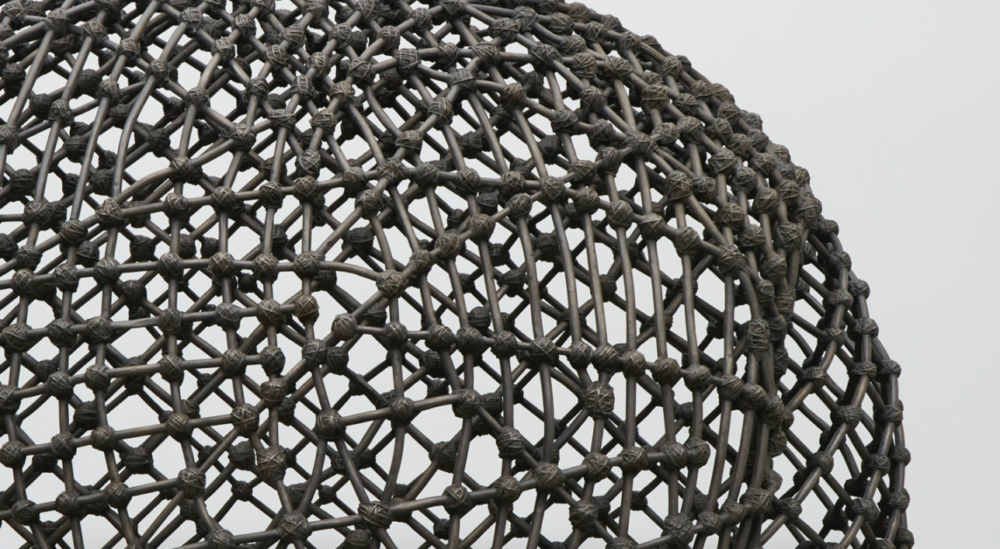It’s been 30 years since Martin Puryear’s last solo exhibition in Los Angeles—an exciting place to contextualize Puryear’s work considering the city’s history of burgeoning sculptural practices, especially those relating to assemblage and minimalism. The show includes several sculptures made over the last five years, which, though freestanding, appear as if tethered to the same strange undercurrent, engaging in quiet, poetic exchanges through subtle, graceful gestures. Puryear’s sculptural language is powerful in its ability to elicit dualistic physical and psychological responses, presenting work that is volumetric, contrived, elusive and open. This dichotomy and balance between the organic and geometric allude to a larger tension running through Puryear’s work—a tension between nature and culture, as art historian Kellie Jones has also pointed out. The colossal seven-foot-tall sculpture, Aso Oke (2019), references the latticed geometry of traditional Nigerian weaving techniques that Puryear mimics and casts in bronze on a much larger scale, thus removing any sense of the form’s utilitarian intention. Multiple undulating forms appear in the shape of a vessel, a sac, a nest, or a sea creature, as a biological study or a perspectival renaissance drawing. Across the gallery, a spiral form sits atop a scalloped pedestal in the sculpture A Column for Sally Hemings (2021)—initially conceived for the 2019 Venice Biennale. Upon closer inspection, the shell-like spiral form is actually a shackle, a form that alludes to a physical and psychic heaviness, a desire for wholeness that refuses definition, emulating sacred knowledge and spirals of time that run throughout Puryear’s practice.
Matthew Marks Gallery
1062 North Orange Grove
& 7818 Santa Monica Boulevard
Los Angeles, CA 90046
On view through April 8, 2023


